
Front_Office_Operations
.pdf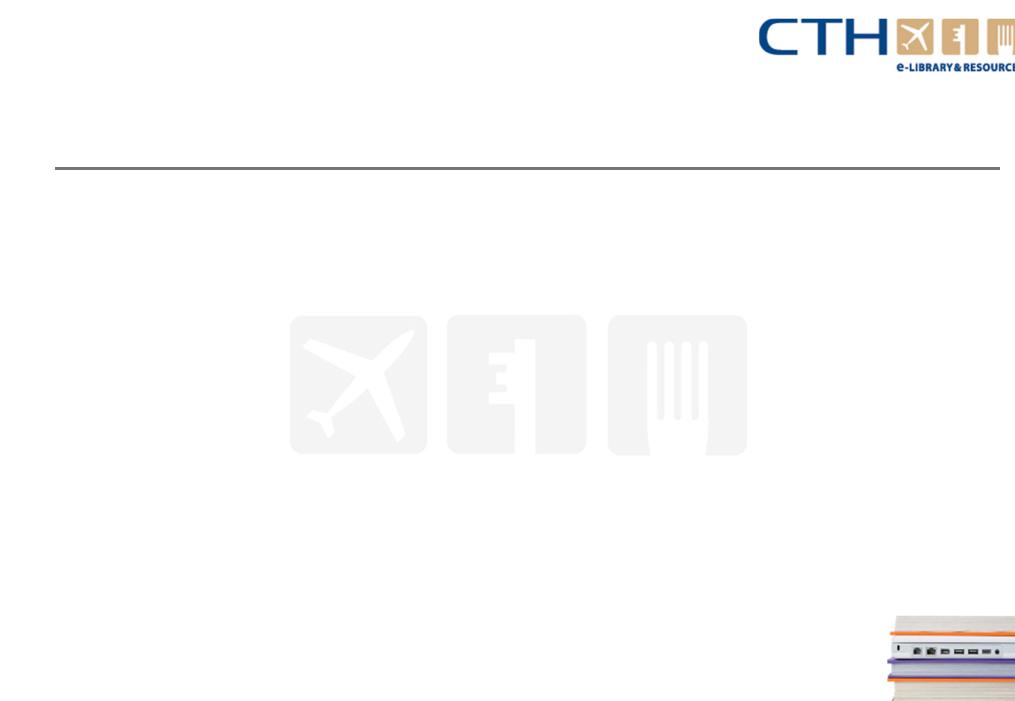
Chapter 2 – Reservation procedure
Handling advance reservation
2.3 Can you fulfil the booking request? Continued …
–Option of accommodation at another hotel: often a sister hotel with whom the first hotel has reciprocal referral arrangements - or another hotel of similar quality nearby. If the enquirer accepts this option, the clerk may make an initial availability enquiry (by telephone) on his or her behalf, and transfer the enquirer to the other hotel's reservation desk (or arrange to have the other hotel contact the enquirer).
If the enquirer says no to all the available options, the enquiry is terminated. However, it has hopefully been dealt with in such a helpful and positive way that the prospective guest will consider the hotel next time (s)he is in the area.
Once a prospective guest has accepted the offer of a room for specified nights on specified terms, a confirmed reservation can be made and recorded. There are various ways of doing this, both manual and computerised, as we will see below. But first...
www.cthresources.com |
Page 91 |
|
www.cthawards.com |
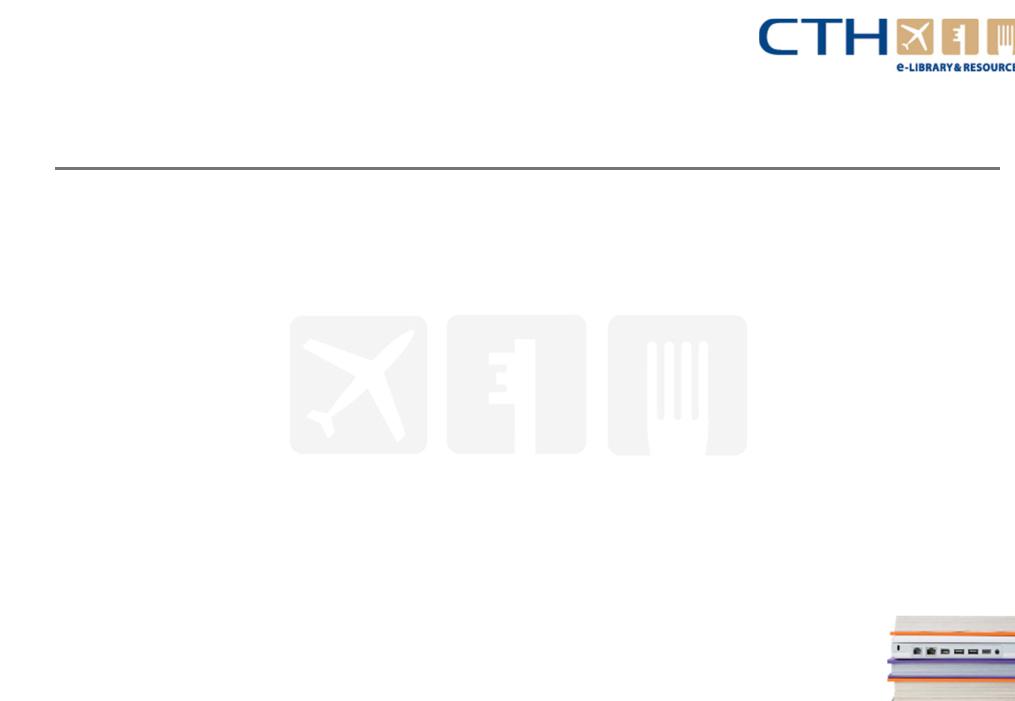
Chapter 2 – Reservation procedure
Handling advance reservation
2.4 Planned overbooking
It says that reservation clerk will check whether rooms are available before offering a room to a prospective guest. But in practice, Hotels - like airlines and other services - routinely over-book their accommodation: that is, they take more bookings than they have rooms available.
Why you want to over-book your accommodation: risking having to tell a guest that you've double booked his room? The economic arguments - and the underlying mathematics - are quite simple. Many hotels suffer considerable loss from reserving rooms for people who book and then don't turn up ('no shows') or who cancel or shorten their stays at the last minute: it is generally too late to expect replacement bookings, and unless the rooms have been paid for in advance, the hotel loses out. Noshows are particularly common for hotels which cater to business travellers. Based on their own past, and industry, experience (occupancy, no show and cancellation statistics), the hotel can estimate what proportion of bookings will be cancelled or cut short, and attempt to minimise their losses by overbooking to this percentage. The aim is not to have double-bookings, but for the over-bookings and noshows to cancel each other out.
www.cthresources.com |
Page 92 |
|
www.cthawards.com |
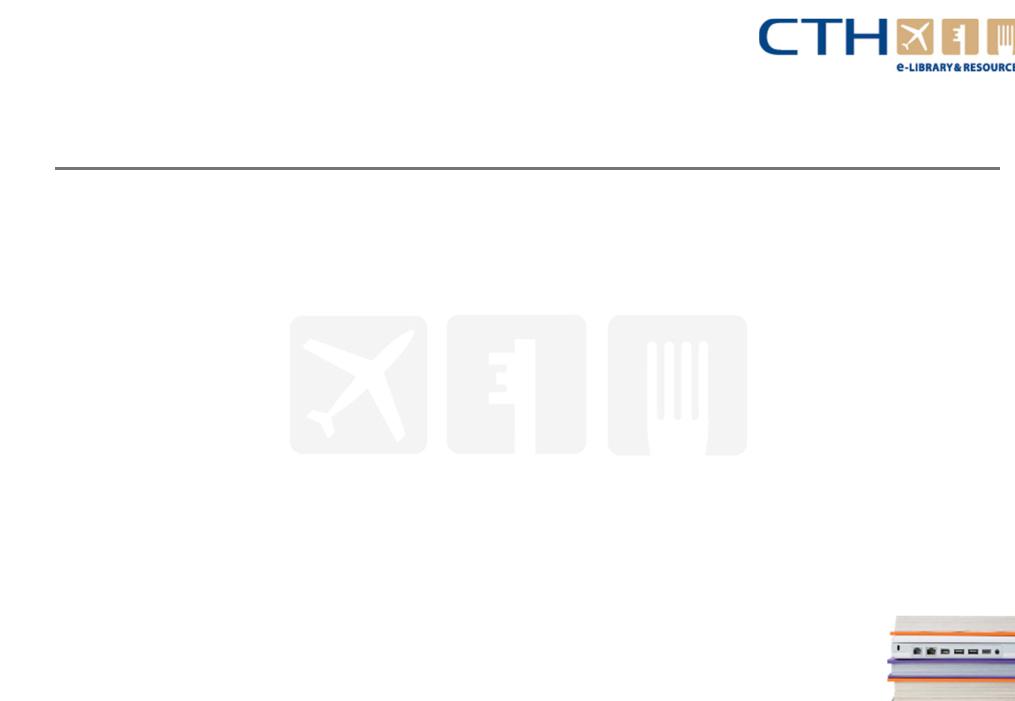
Chapter 2 – Reservation procedure
Handling advance reservation
2.4 Planned overbooking continued …
Permitted overbooking rate may therefore vary from hotel to hotel - since hotels with a high proportion of transient trade will have a higher no-show proportion than a long-stay resort, say. The rate may also vary from week to week, and should be clearly stated on the reservation charts for any given period. In
a computerised system, the software will automatically monitor the ratio of reservations to actual arrivals, and adjust the overbooking parameters for different periods, bookings and room types.
www.cthresources.com |
Page 93 |
|
www.cthawards.com |
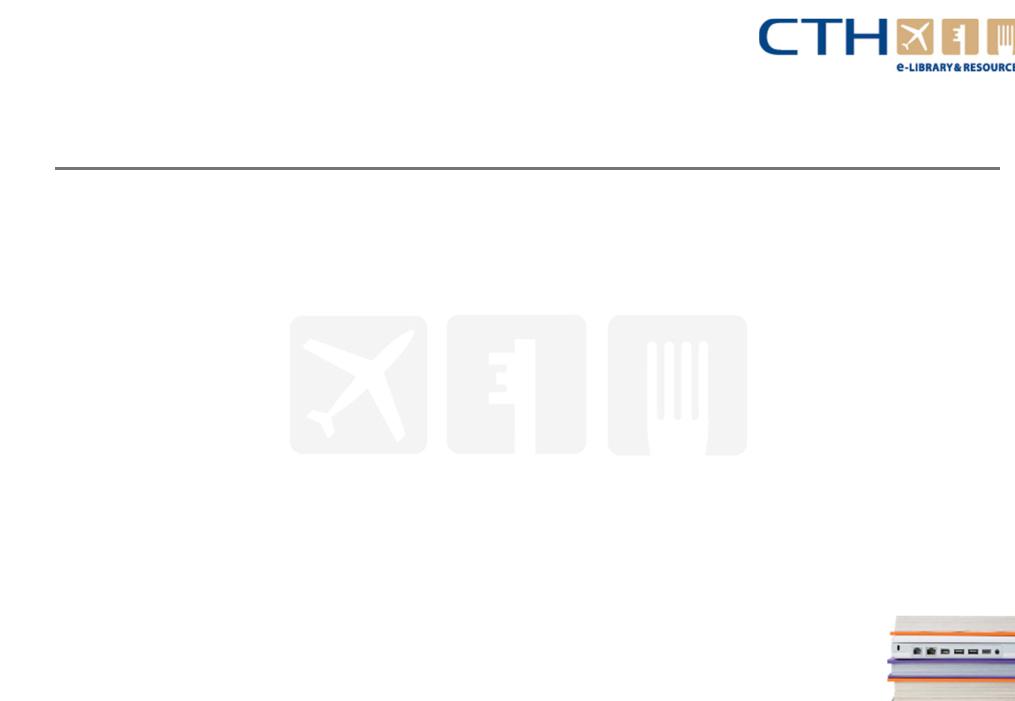
Chapter 2 – Reservation procedure
Handling advance reservation
2.4 Planned overbooking continued…
Advantages of planned overbooking |
Disadvantages of planned overbooking |
Minimises financial losses from cancellations, no- |
Based on past statistical trends: may not be reliable, |
shows and shortened stays |
and cause double-bookings |
|
Double-bookings and relocations may alienate |
Minimises unnecessary refusals, which may send |
prospective guests: lost opportunity of lifetime |
prospective customers to competitors |
revenue |
Based on past statistical trends: should not result in |
Double-bookings and/or confusions over bookings |
excessive double-bookings |
can cause unpleasant and stressful conflict for front |
Planned re-Iocations, in the event of double |
|
bookings, can help 'juggle' bookings for better |
|
yield management |
|
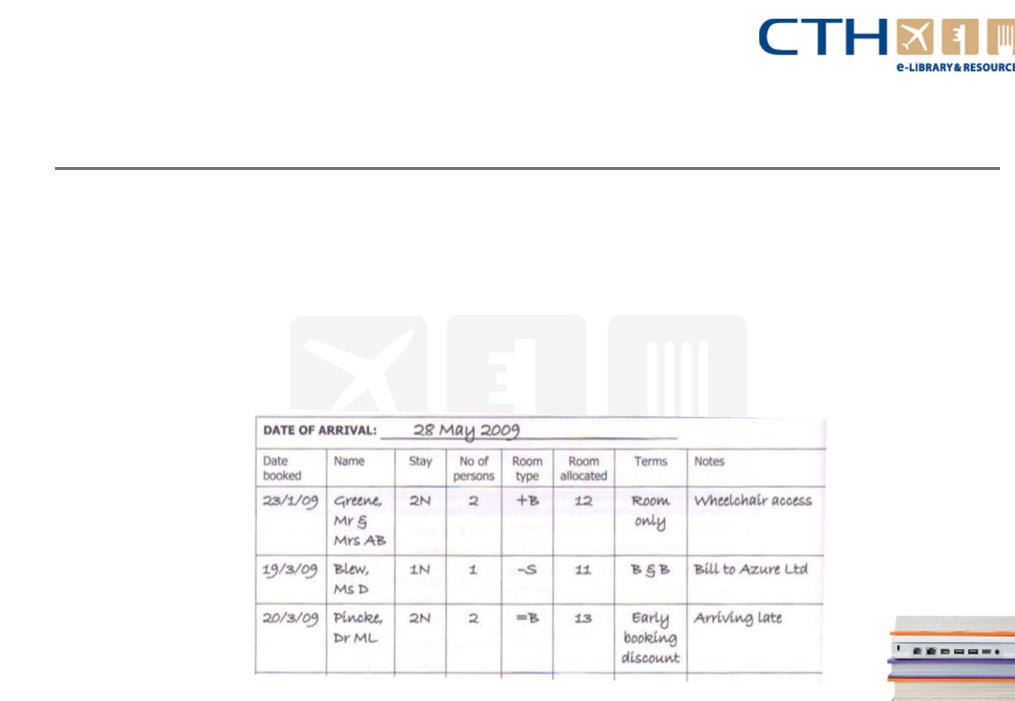
Chapter 2 – Reservation procedure
Handling advance reservation
2.5 The booking diary
The main purpose of any diary system, is to record what is due to happen on any given day: your appointments, tasks, events to remember and so on. A manual bookings diary system can take a variety of forms.
A traditional bookings diary - allows reservations staff to list all the arrivals due on a particular date, often on pages in loose-leaf folder (so that pages can be taken out when no longer relevant, leaving today's date always at the front). Diary entries are made in chronological order, as they are booked, see Figure 2.2.
www.cthresources.com
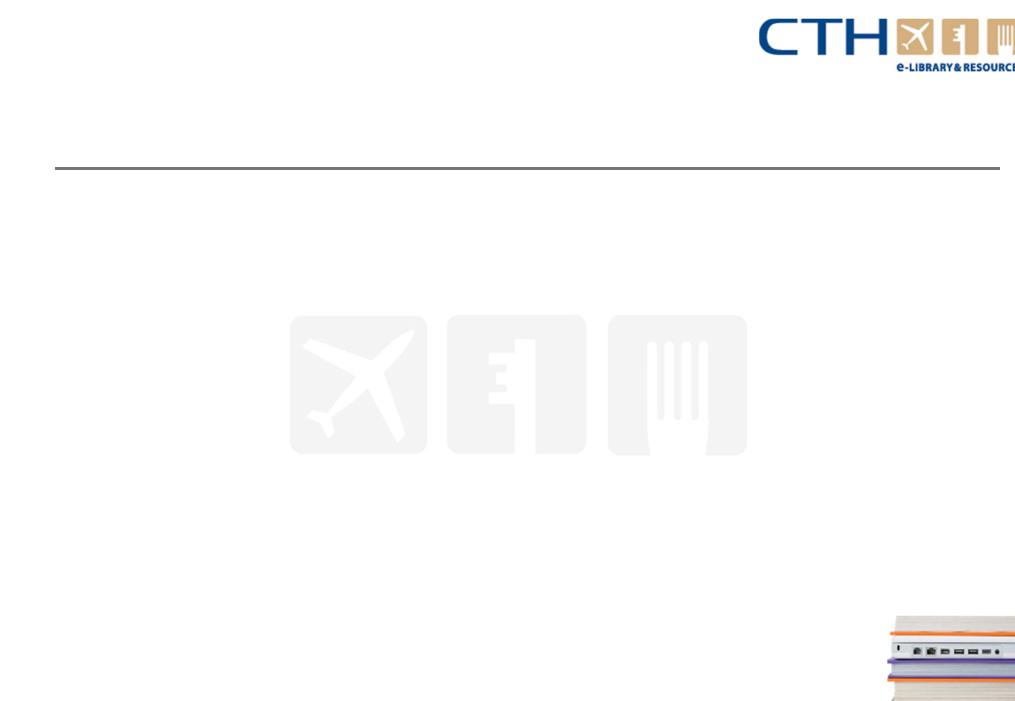
Chapter 2 – Reservation procedure
Handling advance reservation
2.5 The booking diary continued…
In the example they used some of the standard 'shorthand' symbols for different room types here: - Single room
+Double room
= Twin room (N or Nt is often used as shorthand for 'nights')
BWith bath
SWith shower
Note that entries are only made for the date of arrival: the full length of stay (and therefore the status of the room) would be separately recorded on some form of room availability record (covered below).
www.cthresources.com |
Page 96 |
|
www.cthawards.com |
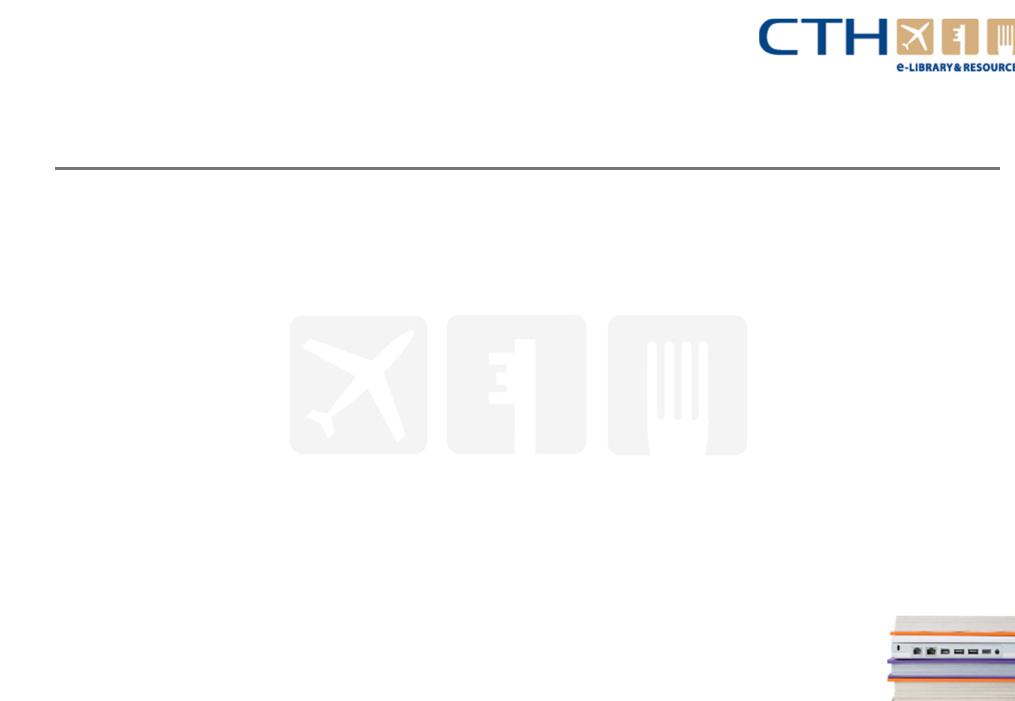
Chapter 2 – Reservation procedure
Handling advance reservation
2.5 The booking diary continued…
Whitney system card racks
For a large hotel, it might be more efficient - instead of making fresh entries in a bookings diary - to simply file reservation forms in batches, according to date of arrival (and then in alphabetical order): it’s easy if you consult a file for a particular day. A streamlined at-a-glance form of this approach, pioneered by the Whitney Corporation, is the Whitney system - which you can still see in some large hotels as a manual 'back-up' system to computerised reservation systems. Reservation details are entered on standard-sized index cards, which are designed to fit into wall-mounted racks: the cards overlap, just showing the top line (arrival date, name, and room type, say, for ease of reference). Sections of the rack are labelled (using moveable header slips) with each of the days of the current month, plus each of the next twelve months, plus a section for bookings beyond that.
As new bookings come in, the card can simply be slipped into place under the month, week or day concerned, and sorted as required. To make it easy to locate particular bookings, insert in alphabetical order /colour, to identify VIP arrivals, group bookings and etc. If the reservations are changed, slips can simply be amended and slotted into another arrival date, as required - without messing up
the record in any way. As each arrival date comes, the relevant rack can be taken out, the others moved along, and emptied racks slotted in on the end. A card-rack system thus offers a constantly up-to-date, at-a-glance look at expected arrivals for any given period.
www.cthresources.com |
Page 97 |
|
www.cthawards.com |
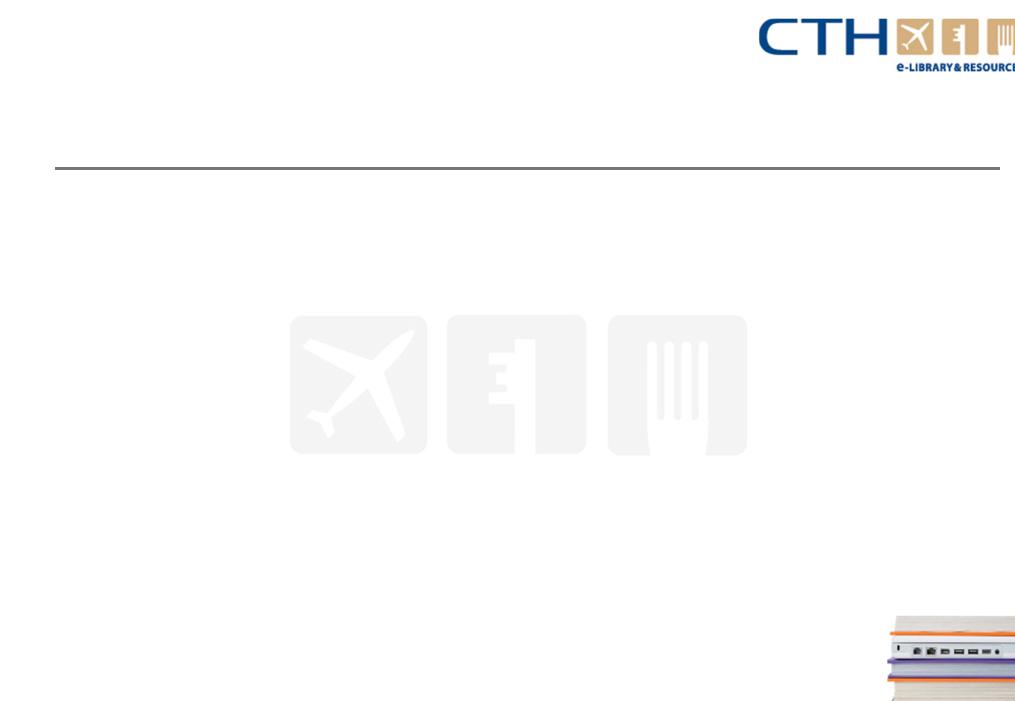
Chapter 2 – Reservation procedure
Handling advance reservation
2.6 Room available records
Room availability records enable front office staff to assess at a glance whether (and which) rooms are available for booking and/or allocation.
There are three basic manual systems currently in use:
●A bedroom book or reservations journal (very small hotels)
●A conventional chart (small to medium-sized hotels)
●A density chart (medium to large hotels).
www.cthresources.com |
Page 98 |
|
www.cthawards.com |
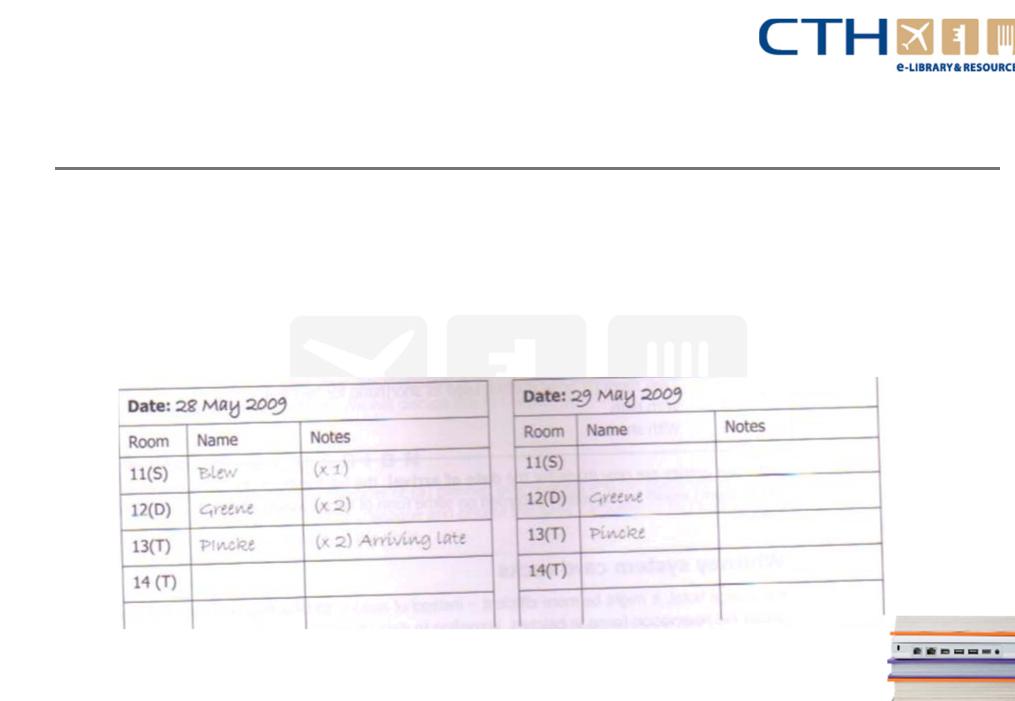
Chapter 2 – Reservation procedure
Handling advance reservation
Bedroom book (reservations journal)
This is much like a bookings diary, except that the entries are made against room numbers, and guests names are entered against their allocated room number for each night of their stay.
Figure 2.3: Bedroom book
www.cthresources.com |
Page 99 |
|
www.cthawards.com |
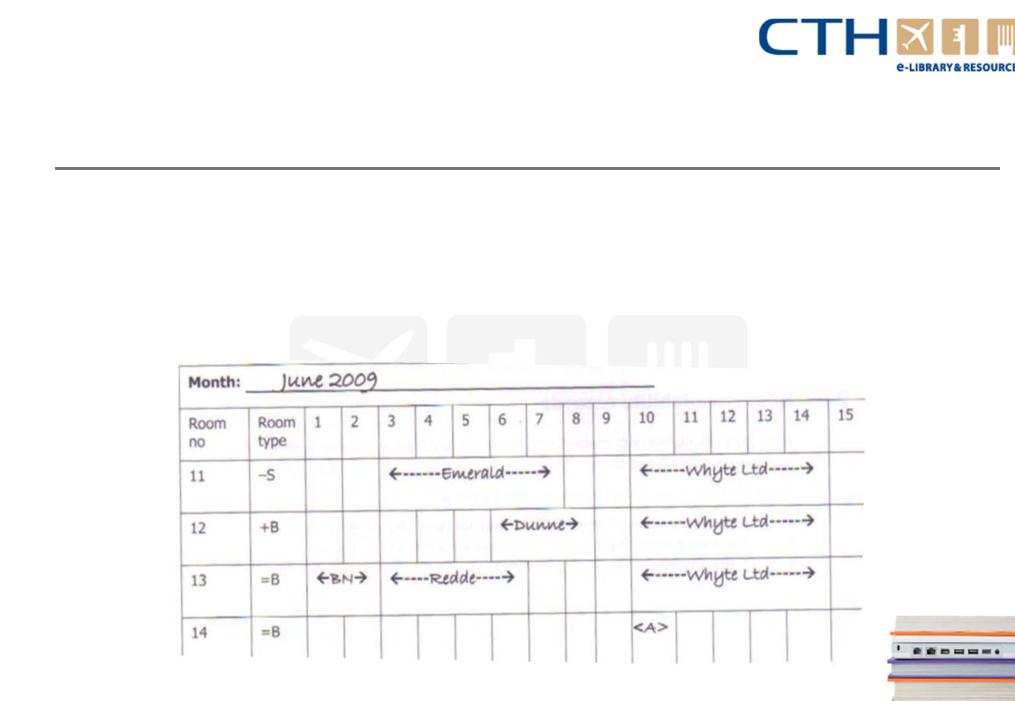
Chapter 2 – Reservation procedure
Handling advance reservation
Conventional chart - Is a simple bookings control chart that allows front office staff to see at a glance the overall booking position of the hotel. It is a form of Gantt chart. At the same time as an entry is put into the bookings diary, another entry is put onto the chart: blocking out reserved rooms with a line from the arrival date to the departure date of each guest.
Figure 2.4: A conventional bookings control chart
www.cthresources.com |
Page 100 |
|
www.cthawards.com |
